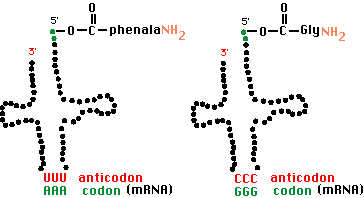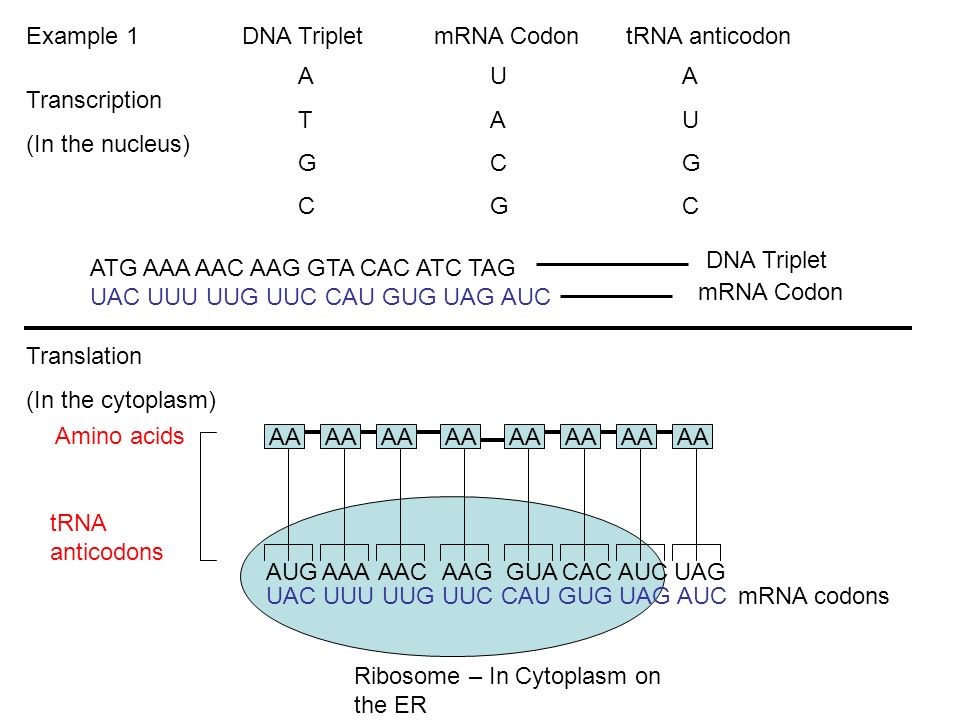Anticodon
Anticodon Definition:
What is an Anticodon: Anticodon is defined as the sequence of nucleotides which are complementary to codons. They are present in tRNAs and permit the tRNAs to carry the correct amino acid in line with mRNA during the process of production of protein.
During the production of proteins, the amino acids are bound with each other in a string, as like the beads in a necklace. It is important to use of correct amino acid incorrect place because amino acids contain different properties. Use the wrong amino acid in a spot will make protein useless or can also be dangerous for the cell.
The anticodon region of a tRNA which could be a sequence of only three bases that are complementary to a specific sequence within the mRNA. Throughout the process of translation, the bases of the anticodon create complementary base pairs within the bases of the sequence codon by forming the suitable strong bonding by Hydrogen bonds.
The function of Anticodons:
Anticodon functions are described below :
- The main function of anticodons is to carry correct amino acids together in order to create a protein on the basis of instruction carried in mRNA.
- Each tRNA contains one amino acid and one anticodon. When anticodon pairs up with the mRNA codon, the cellular machinery considers that the correct amino acid is placed of correct spot for the growth of protein.
- The anticodons are also important to complete the process of turning the information which is stored in DNA into functional proteins which a cell can use to carry out.
- Anticodon help to tune the precise Codon reading.
- It also helps to stabilize Codon-Anticodon interactions.
- Anticodon increase capability of tRNA to decode multiple synonymous mRNA codons.
- It also allows tRNA to rapidly react to environmental changes (stress).
- Anticodon increase protein synthesis.
It also helps to prevent frameshift mutations. - Anticodon contributes to promoting stress signaling pathways.

How Anticodons Work:
When genetic information turned into a protein, the sequence of even occurs as:
- The genetic information in the genome of a cell is described in mobile pieces of RNA by the use of the base-pairing rule. Each of nucleotide has just one other nucleotide that pairs up. When the pairing of RNA nucleotide with each DNA occurs correctly, RNA polymerase produces a strand of RNA which has all the correct information to make protein. Then, mRNA travels to the ribosome, the site production of protein.
- The rules of base-pairing used again to ensure the correct transfer of information at the ribosome. Each three-nucleotide codon in mRNA matched with an anticodon which has complementary bases. Then. The tRNAs which string proteins with each other, and have one anticodon which corresponds to one mRNA codon attached with one amino acid.
- When correct tRNA finds mRNA, its amino acid adds to the growing protein chain. The enzymes catalyze the bonding of amino acid with each other. When amino acid of tRNA adds with protein chain, the tRNA leaves to pick up new amino acid to carry new mRNA.
- When the amino acid of tRNA’s has been supplementary added to the protein chain, the tRNA have to select up a brand-new amino acid to bring around a new mRNA.
- Remarkably, this implies that the tRNA anticodon has the RNA version of an equivalent nucleotide sequence of the initial genome or genes.
- Remember – the genes that were transcribed by the exploitation of complementary nucleotides to create RNA, that then had to bond with complementary tRNA codons.

In this diagram, you see a tRNA that comprised of the anticodon UUU that is complementary to the codon sequence AAA. The codon sequence AAA specifies the amino acid Phenylalanine which is an essential amino acid.
You also see the tRNA present with the anticodon CCC that is complementary to the codon sequence GGG. The codon sequence of GGG specifies that another Amino acid is Glycine.
The amino acid Phenylalanine which is essential amino acid is often covalently bonded to the RNA with the anticodon UUU or UUC as a result of these two codons specify the amino acid phenylalanine. The amino acid glycine is covalently making a bond to tRNAs with the anticodons GGU, GGA, GGG or GGC as a result of these three codons it is specified that amino acid is glycine.
Codon vs Anticodon
| Codon | Anticodon |
|---|---|
| A codon is located on the mRNA molecule. | Anticodon is located in the tRNA molecule. |
| Complementary to the nucleotide triplet in the DNA. | Complementary to the codon. |
| Sequentially present on the mRNA. | Individually present on tRNAs. |
| Determines the position of the amino acid. | Bring the specified Amino Acid by the codon. |
RNA Base Pairing Rules:
Each nucleotide of RNA may only have hydrogen bond with other nucleotides. The DNA and RNA transfer successfully and use information by bond of correct nucleotides.
There are four bases of RNA; Adenine, Cytosine, Guanine, and Uracil. These are considering as by their first letter in order to make easier to show bases sequences. These base-pairing rules for RNA are:
A-U
C-G
G-C
U-A
In RNA, the A nucleotide always has bonded with U nucleotide, and the C nucleotides always have bonded with G nucleotides.
Examples of Anticodons:
Some examples of DNA base triplets, the mRNA codon, and tRNA codons are used to see the filling of miss information by the use of pairing rules.
These examples can be done by use of pencil and paper in order to transcribe each nucleotide complement.

Difference Between RNA and DNA:
In DNA, the ‘Uracil’ base is slightly different base, known as ‘Thymine’. In DNA, the pair of A and T take place. The RNA Adenine also has paired with Thymine of DNA molecule, and DNA Adenine has paired with Uracil of RNA.
The difference lies between the Uracil and Thymine is that the Thymine contains an extra methyl group that makes it more stable as compare to Uracil.
The DNA uses Thymine because the master blueprints information of cell has stored in DNA has must remain stable over a long time period. The RNAs are the copies of DNA which are made for particular purposes and used by the cell for a short time period.


